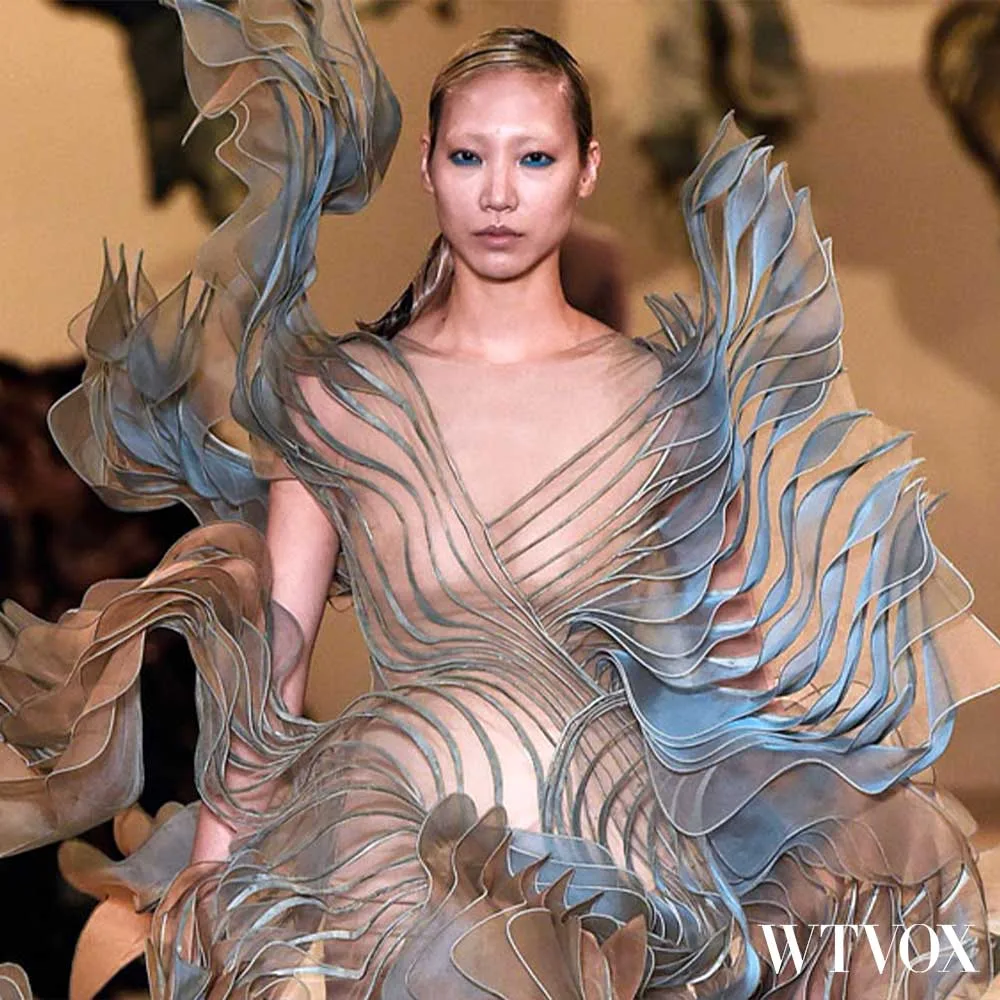The classic image of how the future of humanity might look one day encapsulates – almost always – a ‘human-machine’ kind of blending.
Futuristic humans with robot-looking bodies and super-intelligent outfits find a rich history in transhumanism.
There, powerful artificial intelligence merges with one’s human brain in a cyborg body.
And this is how cyborg fashion ensues.

However, recent research shows there might be a less painful alternative path to the human-cyborg fashion by reconnecting mother nature with our biological construct.
A return to our origins if you like. A path that re-employs biological processes and organisms whenever possible to merge the human body with bio-based fashion elements in beautiful symbiotic ways.

The bio-infused approach applies biomimicry design and materials, not to ‘construct’ the future humans but rather the next generation of clothes.
Garments that draw inspiration from groundbreaking genetic research are used to cure cancer and alter physiology, appearance, and even the cognitive functions of living matter.
Biomimicry Clothing Beyond The Human Senses
The next era of garments infused with functional attributes will derive from research into genome editing, the incorporation of other organisms into the human body, extensive body modification, the use of biological mutations in new organism designs, and much more.
The next age of genetically modified bio-materials won’t bestow humans with skin that glows in the dark, spider legs, or bat wings, but unleash the potential these technologies contain, to redefine us in rapport to the surrounding environment, in the form of new layers of protection.
Through the adoption of lab-created materials to design the next level of bio-fashion, we become not only much more sustainable but also connected to our origins and the nature we have evolved from.
As futuristic as it sounds, studies in bio-based materials are reaching advanced stages.
Lab-Grown Leather
There are startups and innovation labs mass-producing silk from spiders, organic textiles from pineapples and oranges, leather from mushrooms, and even lab-grown skin as the perfect ‘vegan’ substitute for real leather.
What is more interesting is that another line of research in consumer behavior shows that alternative sustainable materials could see fast adoption and become the trademark of the ‘patrician‘ luxury segment.

Moreover, when the human species reaches full control over their genetic programming, another generation of biologically engineered materials will mark the point where any differences between apparel and body will blend away.
The Second Layer of the Skin
Future bio-infused garments will become the second layer of skin, almost like a protective mesh that reacts through form and space, as dictated by the changing environmental conditions and even the social surroundings
This is similar to the ‘Cognitive Dress ‘ case by Marchesa and IBM, which lights up according to the feedback the wearer receives via social media.
In a combination of biotechnology, artificial intelligence, and nanotechnology, the next generation of luxury and fashion garments will act as body extensions of exceptional functional values such as self-healing, biological synthesis, IoT, wearables, and augmented reality embedded.

A future of fashion garments that see ‘fashion-skins’ shielding the wearers from pollution and damaging radiations.
A future of fashion that lets ‘chameleon couture’ change appearance under the owner’s thoughts, allowing us to stand out or blend in as needed.
A futuristic fashion industry where fitness apparel and intelligent shoes know how to protect us against physical injury and even physical violence.

The merger of biotechnology, biomimicry, artificial intelligence, and nanotechnology is reaching the point of reshaping our understanding of reality and the boundaries of normality.
Expect the unexpected.






